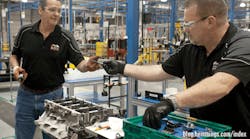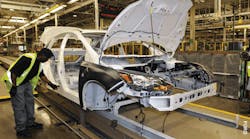“If you were talking to an automotive parts supplier considering making an investment in a manufacturing facility in Mexico, what are the top things to think about?”
That was one of the questions Doug Donahue, principal and vice president of business development for Entrada Group, asked Luis Lozano Soto, tax services partner, and the lead partner of the automotive industry group at PwC Mexico, during a recent podcast. This was one in a series of podcasts in Entrada's offshore manufacturing series: “Shifting Gears: How Automotive Manufacturers are Leveraging Mexico for New Sales as well as Cost Competitiveness.” Soto stressed the importance of site location when entering the Mexican market.
“Being near to the clusters where other automotive manufacturers are is important,” he said. “The Asian companies have gone mainly to the center of the country, and Americans to the North. But some of the American manufacturers are also in the center, so being near to the clusters is a good thing.”
Accessibility to large markets is also important. Soto noted that export is one of Mexico’s key economic activities, and that the Mexican government has signed 12 free-trade agreements with 44 countries, not only in the region but also in Africa, Asia and Europe. As a result, Mexico enjoys economic stability and a favorable business environment, he said.
“The government has been working to maintain the economic stability, and we are not facing financial issues, we are not facing devaluation or integration issues,” he added.
A lean supply chain is also important, he said. In the automotive industry companies learned that they cannot have production facilities dedicated to single markets.
“In the past they had production facilities for the American market, one in Europe for the European market, one in Asia, etc.,” he said. “Now they know that they not only [have] to have one production capacity that will supply on a worldwide basis, but also they have to define unified platforms in which they will be able to produce several vehicles at the same time.”





